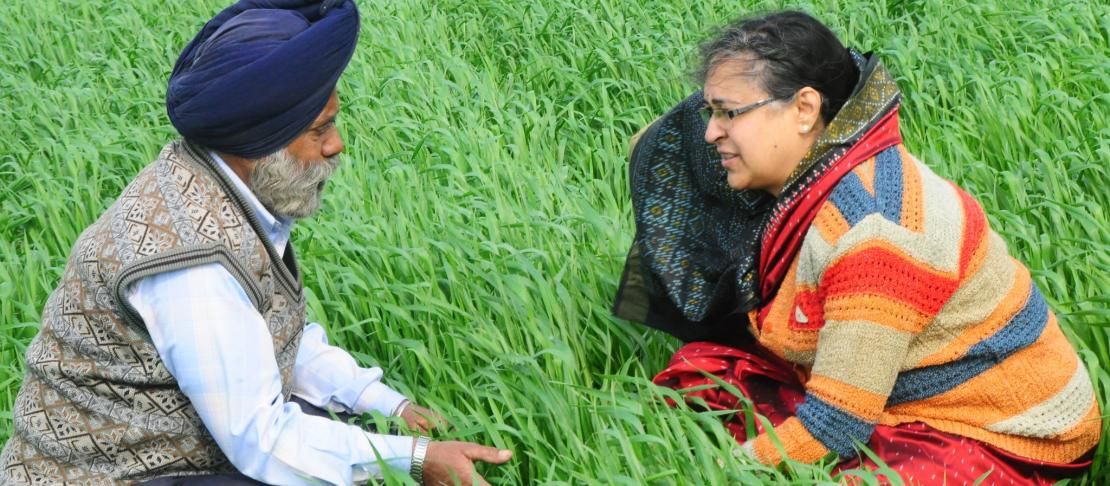Climate change challenges Asian farmers in new ways

by Jeff Haskins and Dan Klotz
How do you adapt agriculture to climate change? The first point driven home by M.V.K. Sivakumar, Director of the World Meteorological Association’s Climate Prediction and Adaptation Branch, and Dr. Takeshi Horie, President of the National Agriculture and Food Research Organization (NARO) of Japan, is the importance of getting practical information in the hands of the farmers.
Dr. Sivakumar and Dr. Horie made their points at “Climate Smart Agriculture in Asia: Research and Development Priorities,” a conference convened in Bangkok this week by the Asia-Pacific Association of Agricultural Research Institutes (APAARI), the CGIAR Research Program on Climate Change, Agriculture and Food Security (CCAFS), World Meteorological Organization (WMO) and the United Nations Development Programme (UNDP).
“The global availability of food has increased with time,” said Dr. Sivakumar, “but the number of hungry and malnourished still remains large. Food demands are increasing, climate demands are increasing, natural disasters are increasing in number and size.”
To that last point, his presentation touched on insurance data revealing that the largest portion of economic losses from natural disasters are not insured. The populations of developing countries have to pay the price, and these are the populations that can least afford this price tag.
“As much as 80% of the variability in agricultural production is due to the variability in weather conditions,” Dr. Sivankumar said. “Rainfed farming remains a risky business.”
“It’s not enough that you have data and products,” said Dr. Sivakumar in explaining the tremendous need for climate services. “This information should increase the knowledge base in the field. How can we assist farmers in coping with climatic risks?”
Dr. Horie pointed to applications that would allow farmers to access warning systems for crops on Google Maps, helping them understand and respond to the impending conditions.
“Even without climate change,” Dr. Horie said, “Asian countries are facing a difficult situation producing food.” His presentation highlighted declining water resources, higher temperatures, and the need for farmers to respond to these challenges. “Chalky” rice and rice infertility, citrus greening disease, and other problems have appeared in the field, challenging farmers in ways that they did not anticipate.
Dr. Horie highlighted a case study from Northeast Thailand that revealed a drastic difference in water availability from year to year. As a consequence, rice yields fluctuated. But variations in field elevation of only several meters provided drastic differences in rice yields and could provide a key to handling fluctuations in water.
Ultimately, bringing all of this information to the farmer is an important role for Asian governments to play. But new technologies must continue to be developed, and new cultivar breeding is critical. The development of rice breeds is already underway so that farmers can better handle what climate change will throw at them: the biotic-stresses of pests and disease and the abiotic stresses of drought, salinity and temperature.
This blogpost was written by Jeff Haskins and Dan Klotz from Burness Communications, attending the Climate-Smart Agriculture Conference in Bangkok, Thailand. More updates from the conference will be published on this blog, and on our Twitter account @Cgiarclimate and Facebook.

